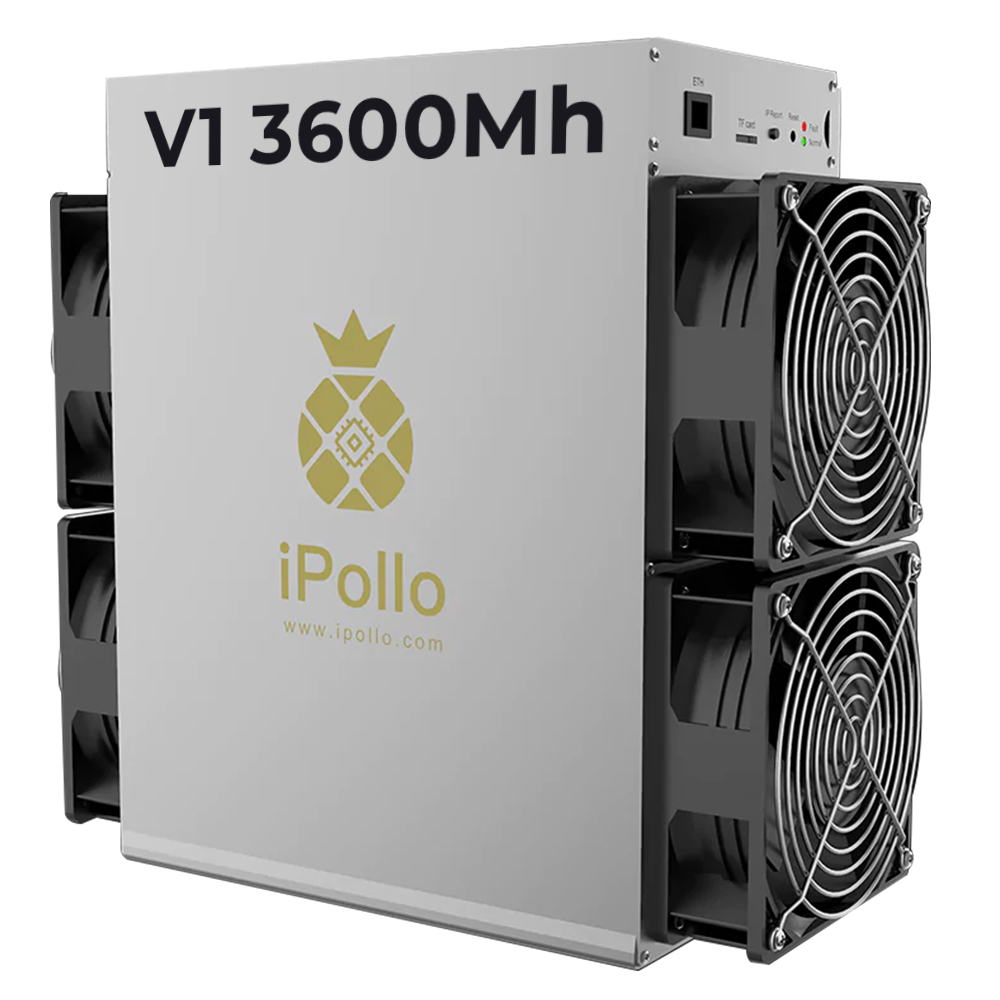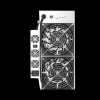Ipollo V1 Troubleshooting Guide for Ethereum Mining
The Ipollo V1 3600 MH/s ETH & ETC Miner is a powerhouse in the world of cryptocurrency mining, specifically optimized for Ethereum (ETH) and Ethereum Classic (ETC) operations. With its impressive hashrate of 3600 MH/s, advanced thermal management, and industrial-grade design, the Ipollo V1 is a top choice for professional miners. However, like any sophisticated piece of hardware, it can encounter operational challenges. This troubleshooting guide is designed to help you diagnose and resolve common issues, ensuring your mining operations remain efficient and profitable.
Understanding the Ipollo V1: A Quick Overview
Before diving into troubleshooting, it’s essential to understand the key features of the Ipollo V1 that make it a standout miner:
- Hashrate: 3600 MH/s, optimized for EtHash algorithm (ETH and ETC).
- Memory: 6GB architecture for handling memory-intensive tasks.
- Cooling System: Quad-fan design maintains optimal temperatures (5-25°C) with a noise level of 70dB.
- Power Consumption: 3100W, offering excellent efficiency for its class.
- Connectivity: Ethernet interface for reliable pool integration.
- Durability: Compact form factor (314 x 194 x 290mm) and 13kg weight, designed for industrial use.
With these features, the Ipollo V1 is built for continuous operation in controlled environments. However, even the most robust systems can face issues. Let’s explore common problems and their solutions.
Common Issues and Troubleshooting Steps
1. Miner Fails to Power On
Symptoms: The miner does not respond when powered on; no lights or fan activity.
Possible Causes:

- Faulty power supply or cable.
- Incorrect voltage input.
- Internal hardware failure.
Troubleshooting Steps:
- Check Power Supply: Ensure the power supply unit (PSU) is functioning correctly. Test with another PSU if possible.
- Verify Voltage: Confirm the input voltage matches the miner’s requirements (typically 220V).
- Inspect Cables: Check for damaged or loose power cables.
- Internal Inspection: If the above steps don’t resolve the issue, inspect the internal components for visible damage or disconnections.
2. Overheating and Thermal Shutdown
Symptoms: The miner shuts down unexpectedly; fans are running at maximum speed.
Possible Causes:
- Inadequate ventilation or airflow.
- Dust accumulation on fans or heatsinks.
- Faulty cooling system.
Troubleshooting Steps:
- Improve Ventilation: Ensure the miner is placed in a well-ventilated area with sufficient airflow.
- Clean Components: Regularly clean the fans and heatsinks to remove dust buildup.
- Check Fan Operation: Verify that all four fans are functioning correctly. Replace any faulty fans.
- Monitor Temperature: Use the miner’s interface to monitor operating temperatures and adjust cooling strategies if necessary.
3. Low Hashrate or Performance Degradation
Symptoms: The miner’s hashrate drops significantly below the advertised 3600 MH/s.
Possible Causes:
- Overheating leading to throttling.
- Incorrect mining pool settings.
- Hardware or software malfunctions.
Troubleshooting Steps:
- Check Temperature: Ensure the miner is operating within the optimal temperature range (5-25°C).
- Verify Pool Settings: Confirm that the mining pool address and worker credentials are correctly configured.
- Update Firmware: Ensure the miner’s firmware is up to date. Visit the manufacturer’s website for the latest updates.
- Inspect Hardware: Check for any signs of hardware wear or damage, particularly in the memory modules.
4. Network Connectivity Issues
Symptoms: The miner cannot connect to the mining pool; frequent disconnections.
Possible Causes:
- Faulty Ethernet cable or port.
- Incorrect network settings.
- Mining pool server issues.
Troubleshooting Steps:
- Test Ethernet Cable: Replace the Ethernet cable to rule out connectivity issues.
- Check Network Settings: Verify that the miner’s IP address, subnet mask, and gateway are correctly configured.
- Test Pool Connection: Try connecting to a different mining pool to determine if the issue is pool-specific.
- Restart Router: Restart your router or switch to refresh the network connection.
5. Excessive Noise from Fans
Symptoms: The cooling fans produce unusually loud or irregular noise.
Possible Causes:
- Dust or debris in the fan blades.
- Worn-out fan bearings.
- Misaligned fan assembly.
Troubleshooting Steps:

- Clean Fans: Remove dust and debris from the fan blades using compressed air.
- Lubricate Bearings: If applicable, lubricate the fan bearings to reduce friction.
- Replace Fans: If the noise persists, replace the affected fans with new ones.
6. Frequent Hardware Errors
Symptoms: The miner logs hardware errors or fails to initialize components.

Possible Causes:

- Faulty memory modules.
- Loose internal connections.
- Power supply instability.
Troubleshooting Steps:
- Reseat Components: Open the miner and reseat the memory modules and other internal components.
- Check Power Supply: Ensure the PSU is delivering stable power.
- Run Diagnostics: Use the miner’s diagnostic tools to identify specific hardware issues.
Preventive Maintenance Tips
To minimize downtime and extend the lifespan of your Ipollo V1, follow these preventive maintenance practices:
- Regular Cleaning: Clean the fans, heatsinks, and exterior surfaces every 2-3 months to prevent dust buildup.
- Firmware Updates: Stay updated with the latest firmware releases to benefit from performance improvements and bug fixes.
- Environmental Control: Maintain a stable operating environment with proper ventilation and temperature control.
- Component Inspection: Periodically inspect internal components for signs of wear or damage.
- Backup Configuration: Save a backup of your miner’s configuration settings to quickly restore them if needed.
Leveraging Ipollo V1’s Advantages
The Ipollo V1’s design and features make it a reliable choice for Ethereum mining. Here’s how to maximize its potential:
- Thermal Efficiency: Take advantage of the quad-fan cooling system by ensuring optimal airflow around the miner.
- Modular Design: Use the modular design to easily replace components and reduce downtime.
- Global Support: Rely on Minerfixes’ global logistics and technical support for spare parts and expert assistance.
- Investment Protection: Utilize the comprehensive warranty and support services to safeguard your investment.
Conclusion
The Ipollo V1 3600 MH/s ETH & ETC Miner is a high-performance mining solution designed for professional operations. By understanding its features and following this troubleshooting guide, you can address common issues effectively and maintain peak performance. Regular maintenance and proactive problem-solving will ensure your mining operations remain profitable and efficient.
Whether you’re running a large-scale mining facility or a professional setup, the Ipollo V1’s combination of power, efficiency, and reliability makes it a valuable asset in the competitive world of cryptocurrency mining.